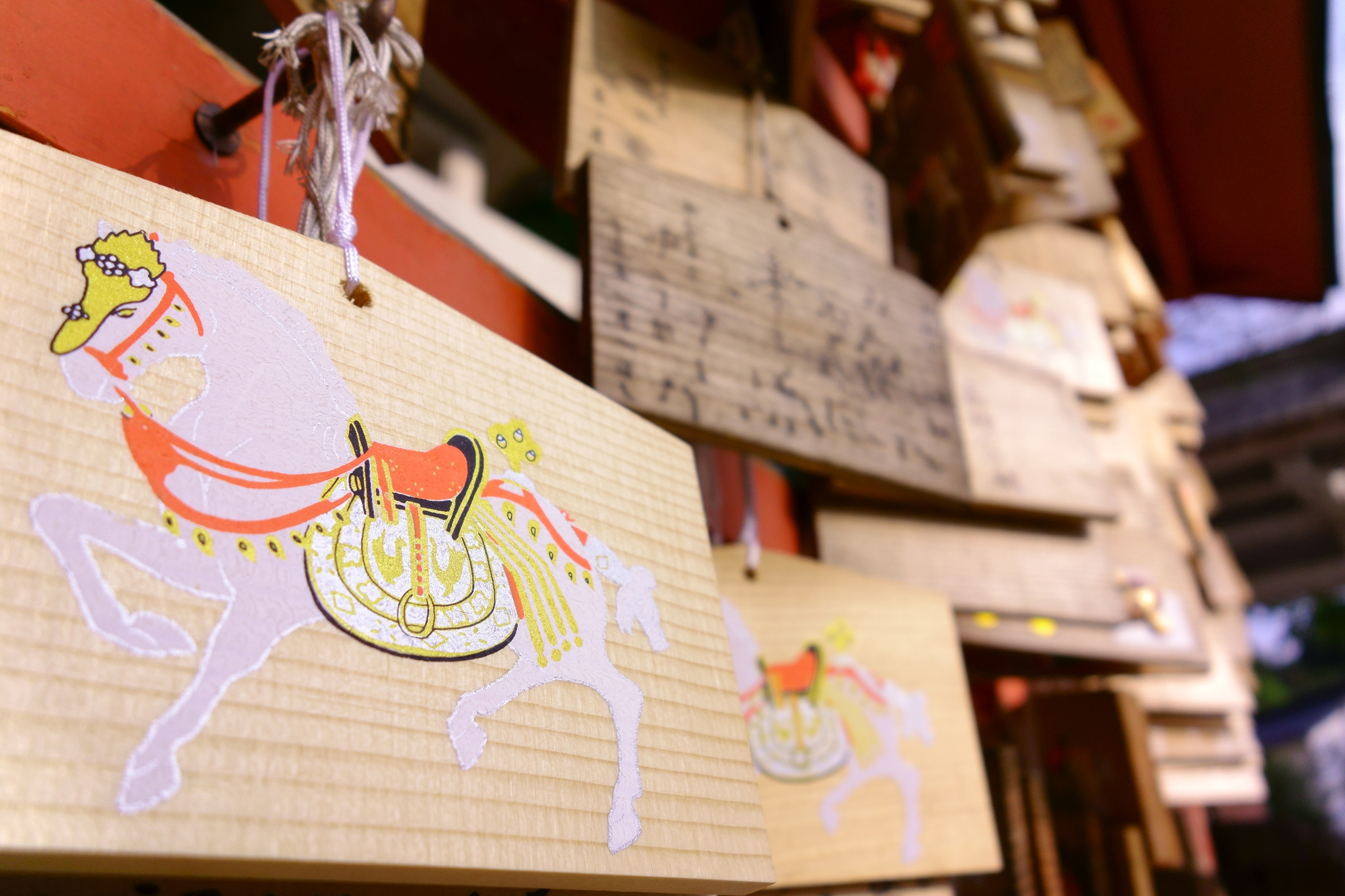In Japan, there will be big sports events like the Rugby World Cup in 2019 and Tokyo Olympics and Paralympics in 2020. We will introduce some sports that either have their roots in Japan, or were introduced to Japan and have gained popularity.
Kurabeuma and Yabusame

Sumiyoshi-taisha Shrine
Kurabeuma and yabusame attached to martial arts and Shinto rituals
Equestrian competitions can be found in the modern Olympic Games. Japan also has several equestrian events, kurabeuma (traditional horse racing) and yabusame(horseback archery), which have a long history.
Yabusame features shooting kaburaya (whistling arrows) while riding on a running horse. It is a traditional riding technique in Japan that was originally performed as a form of mounted archery, but also became associated with ritual events at shrines.
Emperor Uda ordered Minamoto no Yoshiari to establish the arts of archery, horsemanship, and courtesy in 896. Yabusame was performed as practical horseback archery in the Heian period, as written in 1096 in the diary Chuyuki. It became popular to dedicate martial arts displays at shrines among Kamakura samurai, who respected military prowess and arms. Later, this spread nationwide, especially after a display at the Tsurugaoka Hachimangu Shrine by Minamoto no Yoritomo.
The Nihon shoki (Chronicles of Japan) in an entry for the year 679 describes kurabeuma as a horse race held to appreciate fleet-footed horses. This event is thought to be the origin of the practice in Japan. Later, in the Heian period, races became part of the annual Tango no Sekku (the modern Boy’s Festival in May) and were performed at shrines. In fact, horse racing takes place every May at the Kamowakeikazuchi-jinja Shrine (the Kamigamo-jinja Shrine) as part of the Kurabeuma-e-shinji ritual (also known as Kamo Kurabeuma) according to tradition.
Shinto rituals to ward off evil, pray for children’s growth, and for a good harvest

Yabusame
The most famous yabusame is held every September at the Tsurugaoka Hachimangu Shrine, but it can be seen at shrines all over the Kanto area. For example, the event held at the Samukawa-jinja Shrine is performed to pray for peace and prosperity and a huge harvest. Shinto priests also serve as archers.
Although yabusame events declined temporarily after the Muromachi period, the eighth Tokugawa shogun, Yoshimune, revived the custom in the Edo period by dedicating them to shrines on many occasions and using them as prayers for cures for illnesses and to celebrate the birth of children in the shogun’s family. After the Meiji period, yabusame rituals were carried on as dedications to shrines, and such events continue today.
Kurabeuma was also held at shrines around the capital in Kyoto and in suburbs as a Shinto ritual to pray for peace and prosperity and a good harvest. For instance, “Ageuma-shiji”—held at the Tado Taisha Shrine in Mie Prefecture—is believed to have started during the Northern and Southern Dynasties period. One youth is chosen from each of six areas to be jockeys. They then run horses up a steep hill in the local precinct. More jockeys getting over the slope is thought to signal a better harvest for that year.
The horse, messenger of the gods

Sumiyoshi-taisha Shrine
Because horses are thought to be animal messengers that the Gods ride when coming down to the human world, there are many Shinto rituals that use horses. Thus, a deep relationship exists between horses and shrines. Since horses are also closely linked with people’s lives for transportation, farming, and so on, people took good care of them. Consequently, there are Shinto rituals in which people focus on horses.
One such ritual is the “Aouma-shinji,” held at the Sumiyoshi-taisha Shrine. Two white horses are brought to each of the main shrines. It is said that those who see a blue horse (having black and bluish colors) at the beginning of the year will be free of evil spirits for the year and enjoy longevity. This belief originated in a Chinese historical event. Although white horses replaced blue (gray) ones later, they are still called aouma (blue horses).
There is also a ritual known as “Shinme-kenzan” (referring to the honor of seeing a sacred horse) at the Ise-jingu Shrine. It is considered good luck to see the sacred horse led by a Shinto priest to both the inner and outer shrines early in the morning of a day with a 1 in it.
As you can see from the history of kurabeuma and yabusame, a unique culture centered around horse-related practices in Japan has developed from two different sources. First, the Shinto rituals and military arts performed at shrines regarded the horse as sacred, and second, ceremonies related to horses held in the imperial court were later inherited by shrines.
Last, the ema (ritual wooden tablets inscribed with wishes and prayers), often found at Shinto shrines, feature a representation of a horse. These replaced the use of a living horse in modern ceremonies.

Ema (ritual wooden tablet)
Yorio FUJIMOTO
Research
Modern History of Shinto, Shinto Edification, Sociology of Religion
Papers
Mirror and Honesty -Education for Human Nature in Shinto Virtues and Words-(2025/08/01)
Nezu Shrine Small Thought (Nezu Jinja Small Thought)(2024/12/30)

